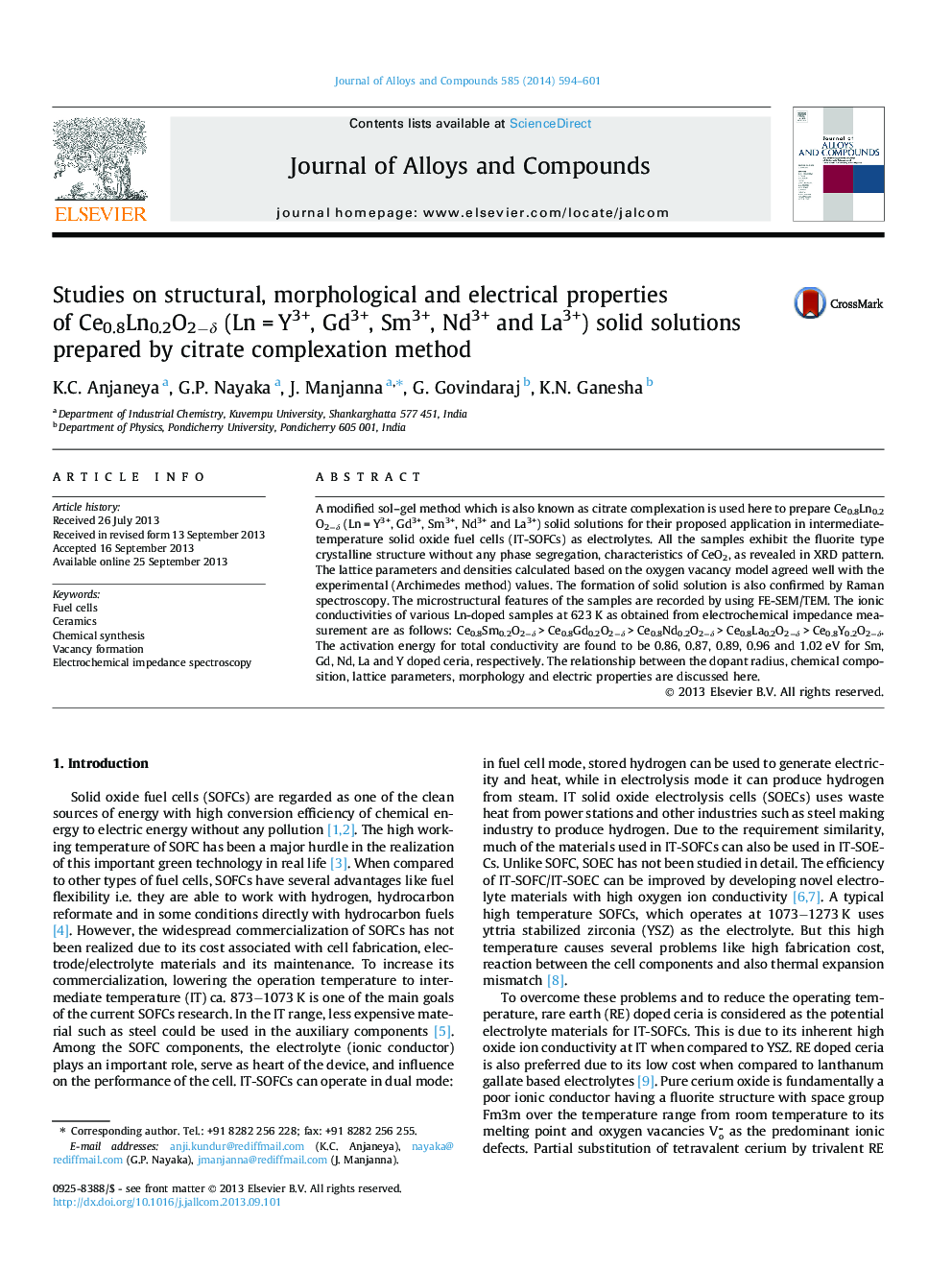| Article ID | Journal | Published Year | Pages | File Type |
|---|---|---|---|---|
| 1613024 | Journal of Alloys and Compounds | 2014 | 8 Pages |
•Ln doped CeO2 was successfully synthesized by citrate-complexation method.•Unit cell parameter increases with increase in dopant radius.•Densities based on oxygen vacancy model agreed with the experimental results.•Raman spectroscopy confirms the formation of Ce0.8Ln0.2O2−δ solid solutions.•Ce0.8Sm0.2O2−δ exhibits the highest oxygen ionic conductivity.
A modified sol–gel method which is also known as citrate complexation is used here to prepare Ce0.8Ln0.2O2−δ (Ln = Y3+, Gd3+, Sm3+, Nd3+ and La3+) solid solutions for their proposed application in intermediate-temperature solid oxide fuel cells (IT-SOFCs) as electrolytes. All the samples exhibit the fluorite type crystalline structure without any phase segregation, characteristics of CeO2, as revealed in XRD pattern. The lattice parameters and densities calculated based on the oxygen vacancy model agreed well with the experimental (Archimedes method) values. The formation of solid solution is also confirmed by Raman spectroscopy. The microstructural features of the samples are recorded by using FE-SEM/TEM. The ionic conductivities of various Ln-doped samples at 623 K as obtained from electrochemical impedance measurement are as follows: Ce0.8Sm0.2O2−δ > Ce0.8Gd0.2O2−δ > Ce0.8Nd0.2O2−δ > Ce0.8La0.2O2−δ > Ce0.8Y0.2O2−δ. The activation energy for total conductivity are found to be 0.86, 0.87, 0.89, 0.96 and 1.02 eV for Sm, Gd, Nd, La and Y doped ceria, respectively. The relationship between the dopant radius, chemical composition, lattice parameters, morphology and electric properties are discussed here.
Graphical abstractFigure optionsDownload full-size imageDownload as PowerPoint slide
